The excitement level surrounding the New York Rangers certainly dropped from the NHL Draft earlier this month to the current free agency period.
That was to be expected, of course. The Blueshirts weren’t going to be able to duplicate the buzz from selecting potential superstar Alexis Lafreniere with the top overall pick, especially with a tight cap situation for next season – and being just one offseason removed from making a huge splash with the free-agent signing of Artemi Panarin.
Related: Canucks’ Best & Worst Trades All-Time
Yet the front office has largely succeeded in staying the course on its rebuilding project, making crucial if unspectacular personnel moves that haven’t unnecessarily accelerated the process. Hamstrung by $13 million of dead cap space as well as entry-level contract bonuses that could come into play next season, team brass has maintained the fiscal discipline that was required this offseason.

The result has been a Rangers salary-cap situation that remains strong long-term, and the youth that general manager Jeff Gorton and team president John Davidson have accumulated since the winter of 2018 should continue to have ample opportunity to start breaking into the lineup.
Sure, maybe those circumstances have made for a “boring” signing period. So evaluation of and reflection on the moves so far are important to understanding why Gorton and Davidson have done what they’ve done. Here’s a look at the team’s offseason, which unfortunately will be best remembered for the departure of three beloved career Blueshirts.
Trading Marc Staal
The front office cut ties with the career Ranger in late September, sending the big defenseman to the Detroit Red Wings along with a second-round pick for “future considerations.” The Blueshirts did so to remove Marc Staal’s $5.7 million cap hit in anticipation of the tighter-than-expected financial situation for next season.
The move, in theory, also opened up room for some of the team’s left defense prospects, though that might have been disproven with the signing of veteran Jack Johnson about two weeks afterward (more on that later). The price of dumping Staal’s money – a second-round pick in 2021 – also seemed steep.
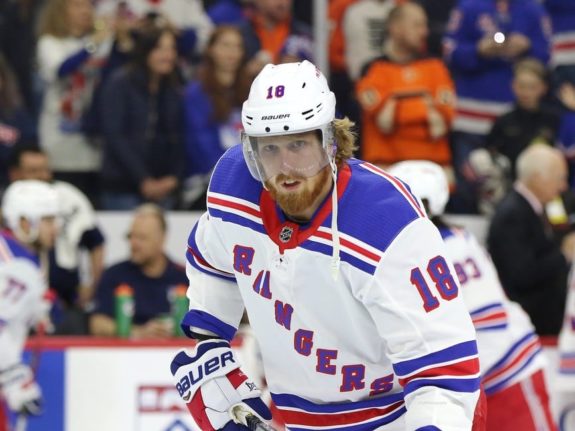
The Rangers needed the cap space, and the net savings of $4.55 million between Staal’s and Johnson’s deals were needed for re-signing restricted free agents and accounting for bonuses in entry-level contracts. That said, surrendering such a high draft pick to do away with a contract that had only one season left to run seemed a tad desperate.
Grade: C
Buying Out Henrik Lundqvist
The excruciating end of an era was all but a foregone conclusion when the Rangers executed a buyout of the best goaltender in franchise history, his brilliant time having passed in New York. Moved into a third-string role last season with the midseason emergence of heir apparent Igor Shesterkin, Henrik Lundqvist did start two games of the qualifying round against the Carolina Hurricanes, but he saw the writing on the wall with Shesterkin and Alexandar Georgiev in the fold.
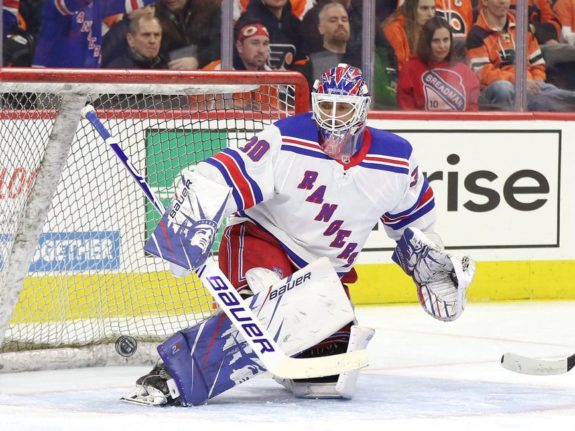
Lundqvist’s departure saved the Rangers $3 million against next season’s cap while adding $1.5 million of dead space the following one, but the transaction was as much about clearing room in the crease then it was getting under the cap. Seeing him in Washington Capitals colors has to be agonizing for the fan base, but there’s no way the Rangers could have carried three goalies next season. The coaching staff and front office handled the necessary end of a franchise star’s time with the team – always a dicey situation – about as deftly as possible.
Grade: A
Entry Draft
The Rangers suffered a painful sweep at the hands of the Hurricanes in the qualifying round. The consolation prize from that was substantial, though, as the Blueshirts cashed in their 12.5 percent chance and won the lottery, allowing them to add Lafreniere, the clear top prospect in the draft.
Once the hype over Lafreniere had settled, Gorton and Davidson went to work adding decidedly less spectacular heart-and-soul type players with the rest of their picks. A trade with the Calgary Flames allowed the Rangers to move up three spots with their second first-round pick and add rugged defenseman Braden Schneider at No. 19 overall. Another deal with the Los Angeles Kings netted power forward Will Cuylle in the second round.
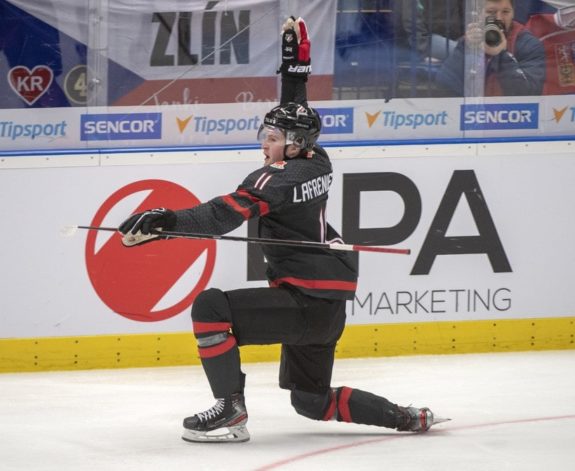
They added a potential sleeper in the third round with center Oliver Tarnstrom and picked goaltender Dylan Garard in the fourth, then more grit followed: forwards Evan Vierling, Brett Berard and Matt Rempe in rounds five and six.
The obvious attempt to add toughness to the organization, though belated, was much-needed. Credit Gorton and Davidson for choosing a theme and following through, although passing on several highly regarded center prospects in favor of Schneider with their second first-rounder – the middle being an area of pressing need for the Rangers – could come back to haunt the front office.
Grade: B
Allowing Jesper Fast to Walk
Though painful and the source of plenty of fan outrage, this was probably necessary in the flat cap era. Though Fast’s eventual modest contract terms with the Hurricanes – three years for $6 million – exacerbated the anger amongst the faithful, the Blueshirts probably couldn’t afford to sign him when taking a long view. The club is expecting to ink Mika Zibanejad to a big extension within the next two years, while numerous talented youngsters, ostensibly much of their future core, will see their entry-level deals expire in the following few seasons.

Fast’s departure also creates an opening for their talented young forwards to battle it out for a spot on the big club. The loss will unquestionably be felt, but decisions such as letting yet another beloved career Ranger go are why Gorton and Davidson get paid – much more so than for the slam-dunk drafting of Lafreniere with the No. 1 pick. It should be noted that the team did attempt to negotiate an extension with Fast, but Gorton and Davidson clearly held the line on what they were willing to pay.
Grade: B+
Signing Defenseman Jack Johnson
With a move seen as a head-scratcher among fans and pundits alike, the Rangers are betting they know better. Johnson played for new Rangers assistant coach Jacques Martin with the Pittsburgh Penguins, while Davidson was team president with the Columbus Blue Jackets while he played there.
The veteran defenseman, bought out by Pittsburgh earlier this month after signing a five-year, $16.25 million contract in July 2018, inked a one-year, $1.15 million deal with the Blueshirts. That’s not much of a commitment, but the devil is in the details. Will the veteran defender serve as a third-pair option and depth player, or might the Rangers’ lack of experience on the left side ultimately lead to Johnson finding his way into the top four?
Judging by his declining effectiveness over the past three seasons, hopefully not the latter. One would also presume (or again, hope) that the Rangers will give their gaggle of left defense prospects every opportunity to win a job over Johnson.
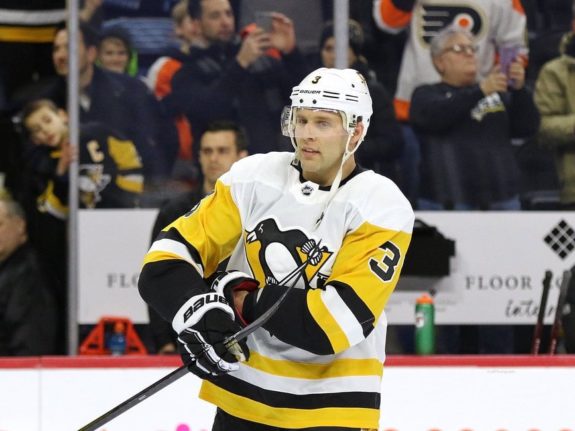
After the fuss over this signing subsided, however, it seemed clear that such a player was needed after the departure of Staal. None of the kids may be ready to seize a full-time job on the blue line this season, and beyond Ryan Lindgren – or the possible moving of Tony DeAngelo or Adam Fox – little certainty exists on the left side. Other than Brendan Smith, whose situation is fluid, an experienced hand had to be added to the mix.
Plus, the Rangers hope Johnson might be able to help improve a big problem from last season.
“One thing that was positive, above all else, is Pittsburgh was tied for eighth in penalty killing with their percentage in the entire league (in 2019-20),” Davidson said. “They were sixth on the road and Jack was one of their important penalty-killing defenseman. We had trouble in that area last year, we were 23rd overall, we were 30th at home.” (From Rangers Eager for Alexis Lafreniere’s Arrival After ‘Easy’ Contract Process’, New York Post, 10/12/2020)
Grade: C
Signing Keith Kinkaid
This was a no-brainer, done mostly to address the need to expose a goaltender under contract in the expansion draft next offseason. The two-year, $1.65 million deal for Keith Kinkaid also adds depth at the AHL level, while giving the Rangers a veteran who’s played 157 NHL games and posted a 65-56-20 record and 2.95 goals-against average for the New Jersey Devils and Montreal Canadiens.
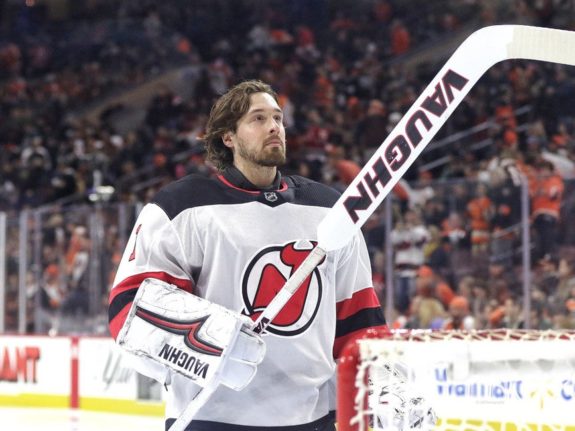
As such, Kinkaid provides insurance against injuries and/or ineffectiveness of Shesterkin and Georgiev. A smart, necessary signing.
Grade: A
Signing Kevin Rooney, Colin Blackwell, Anthony Bitetto
Former Devil Kevin Rooney is likely to get a good shot to center the Rangers’ fourth line after playing 49 games last season, mostly in that role. However, the primary reason for his signing was the same as that of Kincaid’s: The Rangers need to expose two forwards that will be under contract for the expansion draft and have played at least 40 games next season or 70 over the previous two seasons. Rooney, along with fellow center Colin Blackwell, signed two-year contracts to make them eligible to serve in that role.
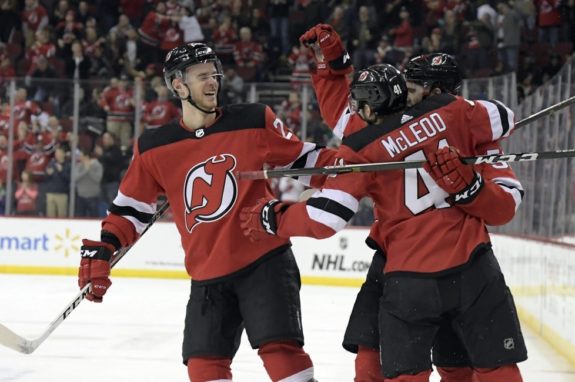
The same applies for Bitetto, who inked a two-year deal to provide depth at the AHL and NHL level and could fulfill the need to expose at least one defenseman to the expansion Seattle Kraken.
Grade: B
Re-Signing Tony DeAngelo, Alexandar Georgiev
The Rangers had leverage and thought short-term here with a pair of astute deals: DeAngelo’s contract, worth $4.8 million per, and Georgiev’s, which comes in at $2.425 million per, avoid major commitments of money and term to both young players, allowing them to be more easily traded. The Blueshirts also maintained one more season of control, as DeAngelo and Georgiev will again be restricted free agents when their contracts expire, albeit with arbitration rights.
Related: Henrik Lundqvist – By the Numbers for No. 30
DeAngelo’s long-term future with the Rangers is uncertain. They love his driving of offense and the power play from the blue line, but not his work in his own end or his propensity for occasional behavioral missteps and lack of maturity. Not wanting to lock themselves in for years to come, the Rangers could use DeAngelo as a chip in a trade for a young center, and that value is enhanced significantly by the team-friendly contract.
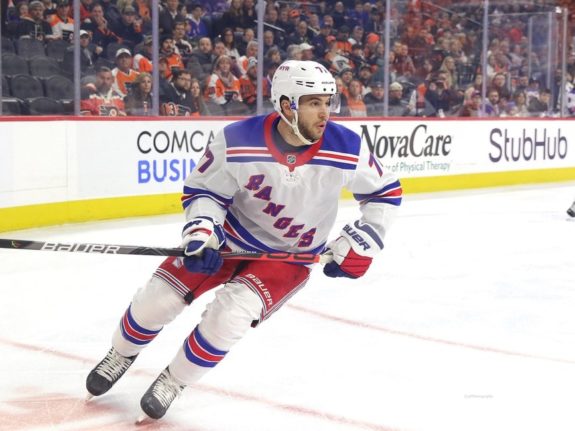
The same goes for Georgiev, the promising young goaltender who will back up the developing Shesterkin and will presumably be shopped at some point.
Grade: A
Work Remains For Front Office
Winger Brendan Lemieux and center Ryan Strome still need new contracts, if, in fact, both are part of the plans for next season. As restricted free agents, neither is expected to receive a large pact as the Rangers seek to navigate a season in which their cap situation is somewhat precarious before it improves considerably for 2021-22.
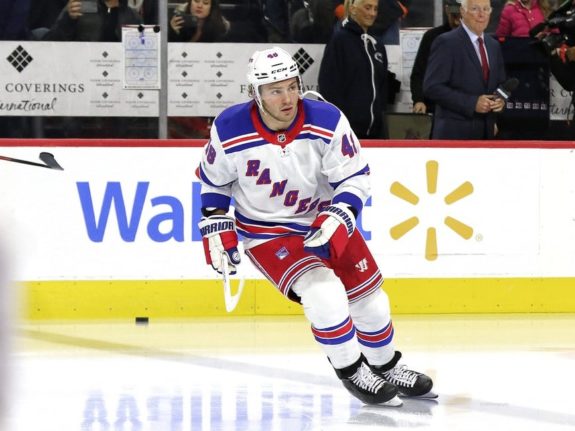
A year after landing Panarin on a seven-year, $81.5 million deal – which paid off handsomely in the first season – the Rangers have mostly stuck to what was necessary, even if the moves didn’t generate much buzz around the league and within the fan base. What makes it a success? This offseason represents yet another indicator that Gorton and Davidson are committed to doing this right, refusing to rush a rebuild that they believe will pay maximum dividends only if they don’t force it forward.